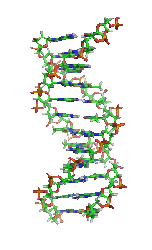Boston, MA (PRWEB) December 23, 2014
Earlier this year in a June 24 international conference presentation, Dr. James L. Sherley, director of the Adult Stem Cell Technology Center, LLC (ASCTC) focused attention on an often overlooked and under appreciated unique property of adult tissue stem cells. His title Asymmetric Self-Renewal by Distributed Stem Cells: Misunderstood in the Past, Important for the Future, embodied the essence of his message to congress participants. He gave the address at the 4th World Congress on Cell Science and Stem Cell Research in Valencia, Spain.
The international congress was organized by the Omics Group as a part of its mission to foster the dissemination of leading discoveries and advances in life sciences research. Their posting this month of the slides from Dr. Sherley's June 24 keynote address now provides worldwide open access to life sciences investigators - stem cell biologists in particular - of the concepts that he emphasized.
In a 2008 publication [Breast Disease 29, 37-46, 2008], Sherley coined the new term distributed stem cells (DSCs) as a biology-based name for all natural tissue stem cells that are not embryonic in origin. Adult stem cells are included under the DSC heading. DSCs do not make every cell in the body. Their nature is to produce only a limited tissue-specific or organ-specific distribution of the total possible mature cell types. So, for example, liver DSCs make mature liver cells, but not mature cells found in other organs like the lungs.
Since 2001 and the start of "the stem cell debate," Sherley has insisted that only DSCs can be effective for developing new cellular therapies. In his keynote address, he explained to attendees why the counterparts of DSCs human embryonic stem cells (hESCs) and more recently developed induced pluripotent stem cells (iPSCs) could not.
Though many stem cell scientists recognize and acknowledge the genetic defects, incomplete differentiation, and tumor formation problems of hESCs and iPSCs - which their proponents suggest can be solved - few appreciate their greater problem, which cannot be solved. Unlike DSCs, hESCs and iPSCs lack the property of asymmetric self-renewal.
Sherleys main message is that asymmetric self-renewal, which is the gnomonic for DSCs the very property that defines DSCs is essential for effective cellular therapies. Asymmetric self-renewal means that DSCs can actively multiply with simultaneous reproduction of themselves and production of mature cells. This ability allows DSCs to replenish mature cells, which are continuously lost from tissues and organs, but not lose their genetic blueprint required for tissue and organ renewal and repair.
The asymmetric self-renewal of DSCs is a crucial consideration for all aspects of their study and use. Sherley argues that overlooking it is holding back progress in regenerative medicine. Asymmetric self-renewal is the factor that limits the production of DSCs; but it is so unique to them that it can also be used to identify DSCs, which are notorious for being elusive. The ASCTCs patented technologies for producing and counting DSCs for research and clinical development are grounded in the companys special research and bioengineering expertise for DSC asymmetric self-renewal.
Asymmetric self-renewal may even play a role in the efficient production of iPSCs. At the end of his address, Sherley announced the approval of a new ASCTC patent. The patent covers the invention of a method to make iPSCs from DSCs that were produced by regulating their asymmetric self-renewal (U.S. Patent and Trademark Office No. 8,759,098).
The ASCTC anticipates that despite the new technologys origin in DSC research, it will advance human disease research based on iPSCs. Although iPSCs are not suitable for cell therapy applications, they are uniquely able to provide disease research models for hard to obtain cell types found in patients (e.g., brain cells from autism patients, cardiac cells from heart disease patients).
Read more:
Adult Stem Cell Technology Center, LLCs Director Sherley's Address on Whats Holding Back Regenerative Medicine ...
